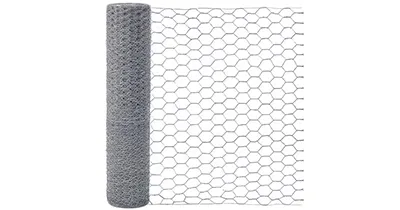-
 Phone:
Phone: -
 Email:
Email:

galvanized baling wire
Understanding Galvanized Baling Wire Its Uses and Benefits
In today's fast-paced manufacturing and recycling industries, the need for strong, durable, and reliable wire materials is paramount. One such material that has gained significant importance is galvanized baling wire. This versatile product plays a crucial role in a variety of applications, especially in the packaging, recycling, and agricultural sectors. Let’s explore what galvanized baling wire is, its manufacturing process, and its various uses.
What is Galvanized Baling Wire?
Galvanized baling wire is a type of wire that is coated with zinc through a process known as galvanization. This coating provides an additional layer of protection against corrosion and rust, which is crucial in applications where the wire is exposed to moisture and harsh environmental conditions. Typically made from high-strength steel, galvanized baling wire is known for its tensile strength, making it ideal for bundling and securing materials.
Manufacturing Process
The production of galvanized baling wire begins with high-quality steel wire, which is drawn down to the desired gauge or thickness. After the wire is formed, it undergoes a galvanization process. This can be achieved through several methods, including hot-dip galvanization, in which the wire is submerged in molten zinc, or electro-galvanization, where a zinc coating is applied through an electrical process. The hot-dip method is preferred for baling wire due to the thicker and more robust coating it provides, enhancing the wire’s durability and lifespan.
Applications of Galvanized Baling Wire
Galvanized baling wire is primarily used in the recycling and waste management industries, particularly for baling materials like cardboard, paper, and plastics. It is essential for creating compact bales that are easier to handle, transport, and store. By securing these materials tightly, galvanized baling wire aids in maximizing space and efficiency in recycling facilities.
galvanized baling wire

In the agricultural sector, baling wire is critical for securing bales of hay, straw, and other agricultural products. Farmers rely on this wire to ensure that their bales are tightly packed, protecting the contents from moisture and pests while allowing for easier handling and transport.
Moreover, galvanized baling wire is also employed in various construction and manufacturing applications. It can be used for reinforcing materials, creating cages, or even as a framework for different structures. Its strength and resistance to rust make it suitable for both indoor and outdoor use.
Benefits of Galvanized Baling Wire
One of the primary advantages of galvanized baling wire is its corrosion resistance. The zinc coating protects the wire from rusting, extending its lifespan and reducing the need for frequent replacements. This durability makes it a cost-effective solution for businesses that rely on secure and long-lasting bundling options.
Additionally, galvanized baling wire is known for its high tensile strength, allowing it to withstand considerable pressure without breaking or losing its shape. This reliability is essential in preventing failures during the baling process, which can disrupt operations and lead to financial losses.
Lastly, its easy handling and versatility make galvanized baling wire a preferred choice in various industries. It can be easily cut and twisted to accommodate different bundling needs, making it adaptable for a range of applications.
Conclusion
In summary, galvanized baling wire is a vital resource that supports various industries, particularly in recycling and agriculture. Its corrosion resistance, high tensile strength, and versatility make it an excellent material for securing and bundling products. As industries continue to evolve, the demand for durable and reliable materials like galvanized baling wire will undoubtedly remain significant, contributing to efficient operations and sustainable practices within the manufacturing and recycling sectors.
-
Wire Mesh for Every Need: A Practical SolutionNewsJul.25,2025
-
Steel Fences: Durable, Secure, and Stylish OptionsNewsJul.25,2025
-
Roll Top Fencing: A Smart Solution for Safety and SecurityNewsJul.25,2025
-
Cattle Farm Fencing Solutions for Maximum SecurityNewsJul.25,2025
-
Affordable Iron Binding Wire SolutionsNewsJul.25,2025
-
Affordable Galvanized Wire SolutionsNewsJul.25,2025
-
Wire Hanger Recycling IdeasNewsJul.25,2025








